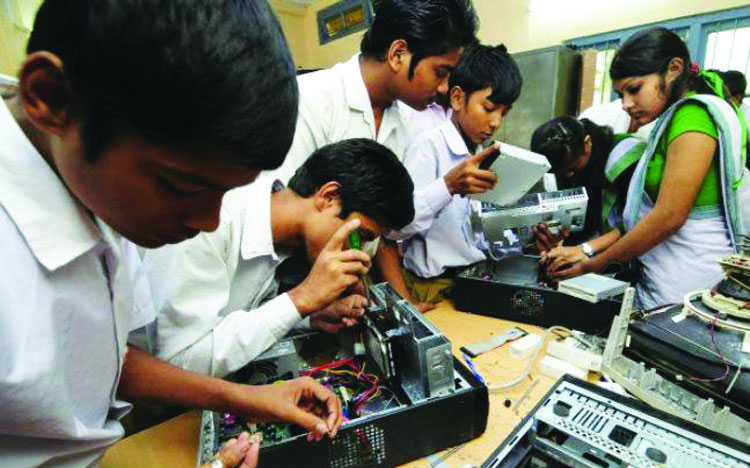Employment generation is definitely not a cinch and requires relevant and adequate industry linkages to make the workers skilled and meet global benchmarks
The initial bootless skilling setup in India was nothing but a notion of a lopsided skill development. The potential of India’s demographic dividend was realised with the launch of Skill India Mission by the Ministry of Skill Development and Entrepreneurship (MSDE) on July 15, 2015.
The Government focused on developing a comprehensive programme, which would provide an aid in removing the stumbling blocks to the mission. The main focus of the programme has been to create convergence across the sectors and the States in terms of skill training activities.
Recognising the potential of the India’s youth, a flagship programme, Pradhan Mantri Kaushal Vikas Yojana (PMKVY), was launched with its six key components aiming to skill one crore youth by 2020. Various studies suggested that the respondents were satisfied with the skills trainings imparted to them, which further helped them in attaining gainful employment.
The scheme, however, suffered from various loopholes in terms of training infrastructure, limited participation by the private sector, lack of compliance to international standards and a considerable gap between the industries’ demands and skills supply. A sequel of this scheme, PMKVY 2.0, was launched the following year with an aim to overcome all the drawbacks of PMKVY.
The scheme was aimed at skilling 10 million youth during 2015-16 and acquired a budget of Rs 12,000 crore. However, it could achieve only approximately 50 per cent of its set target by 2019 and thus failed to stop the mass migration triggered by the pandemic. The case could have been less intense had the scheme been successful in providing employment to people in their areas only.
Apart from this, a requirement of skilled workforce as reported by the National Skill Development Corporation (NSDC) was estimated at 347 million, to be achieved by 2022, which seems a distant dream as India has been facing a shortage of skilled manpower for more than a decade now.
The training capacity stands approximately at 4.3 million, in contrast to 12 million people which are expected to join the workforce every year for training, thus depriving them of effective skill training modules. This makes the scenario worse and is a major obstacle in India’s growth. This pattern of escalated numbers has been witnessed to drain the funds of the State, resulting in a shortfall of funds for other imperative areas.
A realistic estimation of targets along with the flexibility for the usage of allocated cash reserve is the need of the hour. Another factor which serves as a major gap in the skill development framework is the ignorance of quality by the training institutes, which further hampers the trust of the trainees. A Government- appointed committee highlighted this issue.
A sincere resolution to this problem can be achieved by regular audit of the training centres, which the Government has already been doing for some time now. In addition, the trainers can be encouraged to upgrade their knowledge and rewarded for their achievements based on the students’ feedback. This would undoubtedly enhance the quality of the trainers hired and the subsequent trainings provided by them to the candidates.
Nevertheless, the private sector, too, plays a crucial role in the vocational training framework. Initially, the private sector was quite alien to this Government initiative; however, it did not remain secluded for long. The Government realised that industry linkages serve as a sine qua non, for the effective training and employment of youth. With almost 90 per cent of the population below 60 years of age, and 35 per cent of it below 19 years, employment generation is definitely not a cinch and requires relevant and adequate industry linkages, so as to make the workers trained and meet the international benchmarks. This would contribute to enhancing their skill set, making them globally competent and creating new opportunities for them.
Despite the Public-Private Partnership (PPP) models adopted by the State, there seems to be a lot of untapped potential for the same, which called for another initiative, called the PMKVY 3.0, introduced by the Government on January 15, 2021, in 600 districts.
Launched with a target of skilling 8 lakh youth with 300 courses over 2020-21, the scheme focuses on imparting more demand-driven skills and revolves around digital technology and Industry 4.0 skills. The scheme is vested with a total of Rs 948.90 crores and emphasises upon the role of District Skill Committees (DSCs) and State Skill Development Missions (SSDM) in analysing the skill-demand gaps at a district levels. This scheme looks promising as it excludes any of the drawbacks of the previous schemes.
The writer is Assistant Professor at the Goswami Ganesh Dutta Sanatan Dharma College, Chandigarh. The views expressed are personal.


























